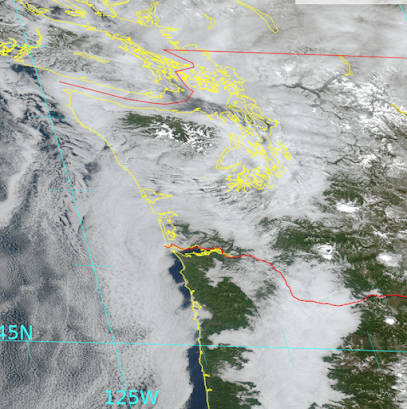Why Does High Pressure Produce Low Clouds in the Pacific Northwest. Plus, the Latest Forecast
My new podcast answers a question several have asked:
Why Does High Pressure Produce Low Clouds over the Northwest?
Such a situation occurred this week, as illustrated by the satellite image on Tuesday afternoon below. Puget Sound was socked in, as was the Willamette Valley. Low clouds are also evident offshore.
High pressure promotes low clouds in several ways...all explained in the podcast.
My podcast also provides the weather forecast for this week: a pretty benign situation.
Most notable will be the cool morning temperatures as a modified arctic air mass is over the region. The lows this morning were in the 20s for western Washington and in the teens and single digits over eastern Washington (see below for minima on Sunday morning).
Even colder temperatures are expected tomorrow morning, followed by a slow warm-up on Tuesday through Thursday.
To listen to my podcast, use the link below or access it through your favorite podcast service.







Comments
Post a Comment